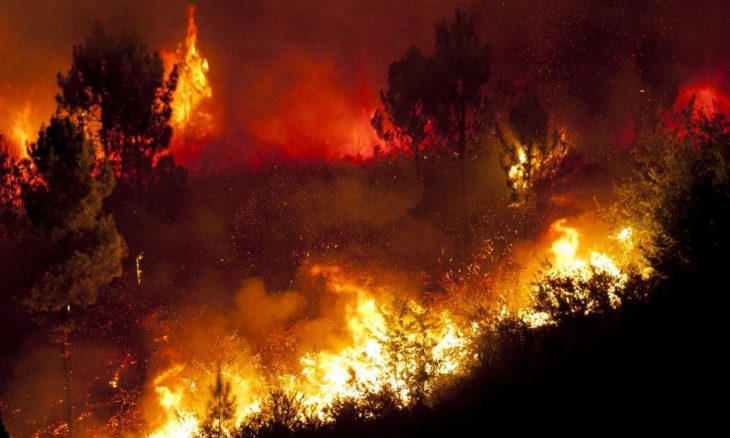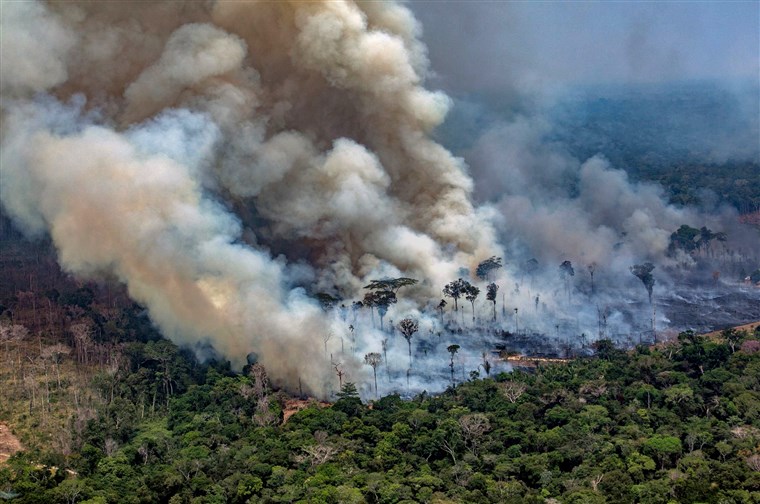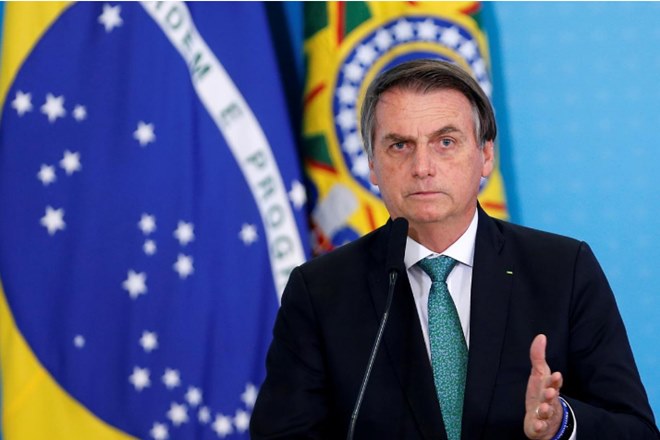
The Amazon Rainforest fires of 2019-2020 is not an unknown fact for any of us. Last year brought an unexpected increase in the fires which seemed unstoppable last year. There are around 670 million ha of Amazon rainforest and human-driven deforestation has been a concern for decades now as the impact of the rainforest on the global climate is being continuously measured. Considering the scenario from a global climate perspective, Amazon is the largest carbon dioxide sink of the world. As per estimations by environment experts, it captures a maximum of 25% of global carbon dioxide generation into biomass types and plants.
If not for the Amazon, the levels of atmospheric carbon dioxide would increase and lead to higher global temperatures. Now that the massive rainforests are being destroyed, its viability is one of the biggest concerns of environmentalists across the world.
In this blog, we have talked about everything that happened last year and how it has affected and will affect the environment and ultimately, global temperatures.
Amazon Rainforest Fires
Every year, the Amazon rainforest is lost through fire and the additional release of carbon dioxide to the atmosphere contributes crucially to the total amount of carbon dioxide. Because of the current scenarios of global climate change, the environmental scientists are concerned about the chances of the Amazon reaching a “tipping point” where it would die out never to be retained. If that happens, the land will become more savanna than forest due to the climate change conditions exacerbated by certain anthropogenic activities.
The initial reports of increasing rates of 2019 Amazon rainforest fires
The first report of the increasing rates of the forest was made by the National Institute of Space Research in June-July 2019. They examined the situation through satellite monitoring systems. However, the situation drew international attention in the month of August, when NASA corroborated the reports by INPE. The smoke released from the fires was visible from satellite imagery and it darkened the Sao Paulo city, which is thousands of kilometers away from the Amazon.

In August 2019, the INPE confirmed that there were over 80,000 fires across Brazil. This was a 77% increase for the year-to-year tracking period with an increase of 40,000 fires in Brazil’s Legal Amazon, This area covers 60% of the Amazon rainforests.
By then, it was realized that 2019 is going to be a bad year for the rainforests and mankind in turn. Not to mention, the finest continued till 2020!
Fires continuing till January 2020
By January 2020, over a whopping number if 121,000 fires broke out across Brazil and almost half or ore of those fires were in the Amazon as per the reports of INPE, Brazil. The fires threatened millions of animals, darkened the skies over most cities and destroyed homes of the indigenous tribes. Let us now dig deeper to know what caused the fires.
The reason behind the Amazon fires
Like the wildfires in Canada and the United States are caused by humans, the Amazon fires are almost man-made. Mostly, the fires are set deliberately in name of the slash-and-burn agriculture. It is a method of growing food where cattle ranchers and farmers cut down and burn forests deliberately to clear it for livestock and crops.
The director of international programs in the Department of Forestry and Environmental and the Edwin F. Conger President, Dr. Erin Sills, “Slash-and-burn agriculture has been practiced for thousands of years in forests around the world, especially in the tropics. Farmers cut down trees at the end of the dry season and then burn them right before the rains start. This leaves a nutrient-rich layer of ash on the ground that provides fertilizer for crops.”
Being a member if Connections Between Water and Rural Production, Dr. Sills have studied the impacts of climate change and deforestation in the western Brazilian Amazon. It is a consortium of university researchers that receives funds from the National Science Foundation.
Her main research areas are economic development and forest-based livelihoods, markets and payments for non-timber forest benefits, sustainable forest management, international forest policy, deforestation and land use in the tropics. She also shows interest in the economic assessment of invasive species policies and doing program evaluation with panel data and matching methods.
As per Sills, the slash-and-burn agriculture is nothing but a common practice in the tropics carried out during the dry season. In the western Brazilian Amazon, the dry season runs from June to August.
From 2004 to 2012, there has been a significant reduction in forest clearing in the Brazilian Amazon rainforests. Post this reduction, both fires and deforestation have increased steadily. The rate of the Amazon fires gas increased by over 85% since last year. That’s shocking and threatening!
Critics blamed the Brazilian President
Not just the slash-and-burn method, but cattle ranching in the Brazilian Amazon now accounts for around 80% of the current deforestation rates in the region.
Believing what the critics said, the increase in the fires and deforestation was because of the policies made by the Brazilian President, Jair Bolsonaro. The President took office in January and his administration made a cut in the budget of the environmental protection agency of the country by 24%. Dr. Sills blamed the President and canceled the range of environment fines. Since Bolsonaro took office, Brazil lost over 1300sq. Miles of forest cover to development.

Sills said, “There’s not a severe drought in the Amazon this year, so the fires seem to almost certainly be a result of the current political situation in Brazil. Landowners believe the government is going to stop enforcing environmental regulations, so they’re setting fires without paying much attention to fire breaks or timing.”
Amazon fires were a big deal and required attention
The increasing Amazon fires were a big deal as it contributes largely to the amount of carbon dioxide content in the atmosphere and other significant environmental factors. The higher rates of fires and deforestation could have had adverse consequences for the rainforest and the world at large as the global temperatures till continue to rise.
Dr. Josh Gray, an Assistant Professor at NC State’s Center for Geospatial Analytics and Department of Forestry and Environmental Resources said, “The Amazon is extremely important to our global environment. Our lives would be very different without it.”
Covering a sprawling area of over 2million square miles across the northern region of South America, the Amazon rainforests are the largest rainforest in the world. It is home to millions of flora and fauna, ranging from jaguars to poison dart frogs. We not really realize, but this abundant life is crucial for our survival, providing everything from the raw materials to all the functional ecosystems.
Even though Amazon evolved for millions of years now without fire, the plants and animals living in the rainforest are not capable of adapting the heat. It is completely opposite of how other forests are adapted to the natural fires, which is considered as a vital part of the ecosystem.
Along with its biodiversity, Amazon has got a significant role to regulate the climate with its trees absorbing millions of tons of carbon dioxide. Carbon Dioxide is a key greenhouse gas that leads to global climate change. It is because of increased deforestation that a high amount of this poisonous gas is released in the atmosphere increasing global temperatures.
As per Gray, the trees emit or release the stored carbon back into the atmosphere when they are cut (when they die). However, burning releases the stored amount of gas immediately. Thus, more harmful to the environment.
According to experts like Sills and Gray, the fires will start making a more immediate and direct impact on the indigenous tribes living in the Amazon. Not just these tribes, plants and animals, the Amazon is also home to Earth’s largest river system.
There are more than 30million people residing in the Amazon, which includes 350 ethnic and indigenous groups. These groups are completely dependent on the rainforest for shelter, food, clothes and medicine.
The continuous increase in deforestation and firs rate will also trigger a change in the patterns of rainfall and lead to longer dry seasons, putting all the agricultural productivity at stake. This will particularly happen in the drier climate, making it more difficult for the communities of Amazon to raise livestock and grow crops.
So, Amazon is a big deal!
The ways in which Amazon fires were addressed
Soon, the fires in the Amazon rose into a serious issue called a global political crisis. People in large numbers came down to the streets and voiced on social media demanding action against the fires turning into a global disaster.
After encountering international backlash and anti-government protests, the administration of Bolsonaro deployed several troops in the rainforest to combat the fires. They issued a decree to ban the use of fire in order to clear land across the country.
But, it wasn’t easy to extinguish the fire anytime soon as reported by a professor in the Department of Forestry and Environmental Resources, Dr. Joseph Roise. He specializes in wildland fire behavior.
As the slash and burn operations result in heavy loads of burned substances that fuel longer and hotter fires, such fires get difficult to extinguish. This is what exactly happened in the Amazon. It got more difficult to control these fires as compared to the usual wildfires during times of severe drought – the period when vegetation becomes dry and flammable.
Thankfully, amazon was not experiencing drought at the time of those fires, but the Brazilian government still didn’t have enough resources to control thousands of fires over a vast landscape.
According to Dr. Roise, the best fire prevention technique to use was to control deforestation and balance agricultural activities. He also said that we need to accept the fact that slash-and-burn agriculture is a method considered as an economic necessity for the rural tribes in the developing countries. Rosie said, “The people in the Amazon are people like us. They just want to farm their land and make enough money to survive with their families. The government of Brazil has changed its policy on deforestation. That’s the bigger problem.”
Measures taken to stop deforestation
The rapid increase in deforestation in the Amazon was being monitored for a decade now. Back in 2004, the Brazilian government reformed the forest laws that resulted in a broad array of new policies and regulations aiming at putting an end to deforestation while encouraging activity.
As the deforestation rates increased once again in Brazil, the experienced environment researchers like Gray and Sills worked to understand the role of those reformed policies in mitigating deforestation and promoting sustainable forest management.
Ways suggested by Sills and Gray
A few months back, Sills and her collaborators tested the effectiveness of the ‘green municipality’ program in the areas of Eastern Amazon. The state program aimed at helping the local governments to reconcile the deforestation limits of the federal government with the local demands for sustainable economic development. The ‘green municipality’ program was motivated as a response to the federal government’s adoption of policies of holding local jurisdictions responsible for deforestation within their borders.
After a thorough study, Sills and his team of collaborators found evidence that the participating municipalities in the state program back in the time were capable of maintaining higher levels of economic activity. It was possible even while encountering the federal mandate to mitigate deforestation.
Sills and Gray worked together to analyze the impacts of timber concessions on deforestation rates in Indonesia using remote sensing techniques.
At one end, Gary developed remote sensing algorithms that combined multiple Earth-orbiting satellites and imagery to offer a consistent and long-term record of vegetation change across the region. On the other hand, Sills used struct statistical approaches to calculate the impact of measures and policies that promoted sustainable forest management.
Both Sills and Gray hoped to gradually expand their research to different areas of the tropics, including the Amazon rainforest. According to the researchers, while remote sensing is a technique with the potential to render a more accurate impact assessment, it fails to account for the political, social and economic impact on each region. The process demands crucial input from those on the ground to completely understand the impacts of the President’s policy on deforestation.
Gray said, “Any pattern of deforestation requires an understanding of the context of which it’s happening. We have to keep that in mind when drawing conclusions about why some policies work and don’t work.”
And, in words of Sills, “I’m not hopeful right now. All of the fantastic institutional and human resource capacity in Brazil that once made it possible to bring down deforestation is now being hollowed out by this administration.”
Sills cleared it that she fears the long-term impacts of the policies on deforestation rates and environmental research by the Brazilian President.
In a Nutshell
The year 2020 has not been any good till now and the Amazon Rainforest fires of last year are still not controlled completely it seems. We are moving towards a time of more increased global temperatures that will be harmful to humans, plants and animals equally. Let’s hope the Brazilian government takes necessary actions and reform their policies smartly to mitigate deforestation and maintain the important Amazon rainforests.

